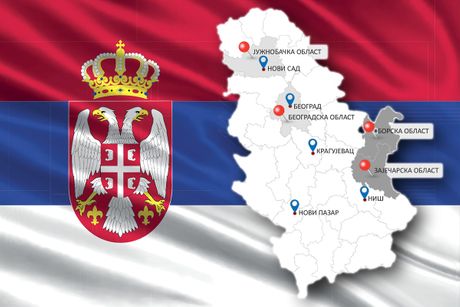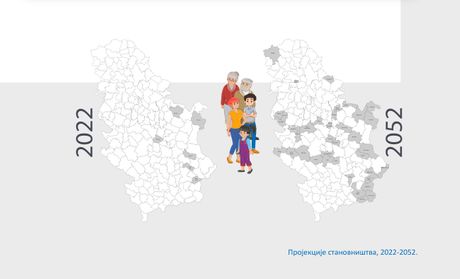In 30 years, Serbia will have 1.5 million less inhabitants: Most of those remaining will live in 5 cities

Alarming data! In 2052, Serbia will have 5.2 million inhabitants, which is a decrease of about 1.5 million compared to 2022, according to the latest report from the Serbian Statistical Office (RSZ).
The decrease in the size of the population will take place under the dominant influence of a negative rate of natural increase (on average 86 percent) compared to the effect of negative net migration, it is stated.
The alarming data states that in 30 years, life expectancy in Serbia will be 6 years longer, but the number of births and deaths will be lower compared to the previous 30 years.
By 2052, the number of children under the age of 14 will be twice fewer than the number of people aged 65 and over. The decrease in the number of residents aged 15‒64 will lead to the ratio of dependents to working-age persons being 3-4, which will translate to a 25% higher burden on the workforce, compared to 2022!
The regions where people were over 50 in 2022 and where they will be over 50 in 2052. Serbia is becoming a country of old people:

Serbia will increasingly become a country with an old population.
In addition, in the next three decades, the demographic heterogeneity of the population in Serbia will deepen: almost 50% will be concentrated in five cities that are important urban centers: Belgrade, Novi Sad, Novi Pazar, Kragujevac, and Nis, while the other half of the population will be unevenly distributed in the remaining 140 territorial units.
The process of population fragmentation will intensify, which is characterized by a significant increase in the number of municipalities with less than 5,000 inhabitants, which were almost non-existent in the previous period, as well as municipalities with a population size of 5,000 to 10,000.
The largest population loss by 2052 will occur in the Bor and Zajecar regions in the eastern part of the country, by approximately 50%, while the lowest loss is projected for the Belgrade and Juznobacki (South Backa) regions, less than 10%.
(Telegraf.rs)
Video: Uručenje nagrade "Krisatalna koala" Radošu Bajiću
Telegraf.rs zadržava sva prava nad sadržajem. Za preuzimanje sadržaja pogledajte uputstva na stranici Uslovi korišćenja.

